Workday Training in New York City, New York, USA
Workday Reporting Training in New York City, NY, USA
Clarity Workday Reporting
Workday Reporting Training in New York offers businesses an efficient tool for managing data. If you are curious about receiving values from multiple business subjects to inform primary objectives for reporting purposes, look no further! This feature should help bring out its full potential!
Workday Reporting offers various courses for data retrieval and management across structures. One key benefit of Lookups in Workday Reporting is the ability to access data in one business object from another business object that requires it.
By keeping all your data intact and always available for use, this approach ensures that data integrity remains consistent and is always accessible when needed.
Utilising Lookup in Workday Reporting
Workday Reporting Training in New York emphasises that Lookup plays an integral part in Workday Reporting; in fact, its application should serve as its core.
Individual-illustration or multi-case disciplines alike need to know how to utilise lookup processes effectively for effective reporting.
Workday Reporting Training in New York highlights that Workday Reporting uses one value per case, while multiple instances have multiple values.
It makes handling multi-case domains challenging, necessitating additional steps before performing lookup functions on them.
Organisations need to transform multi-dimensional domains into single cases before running lookup functions for practical reporting purposes.
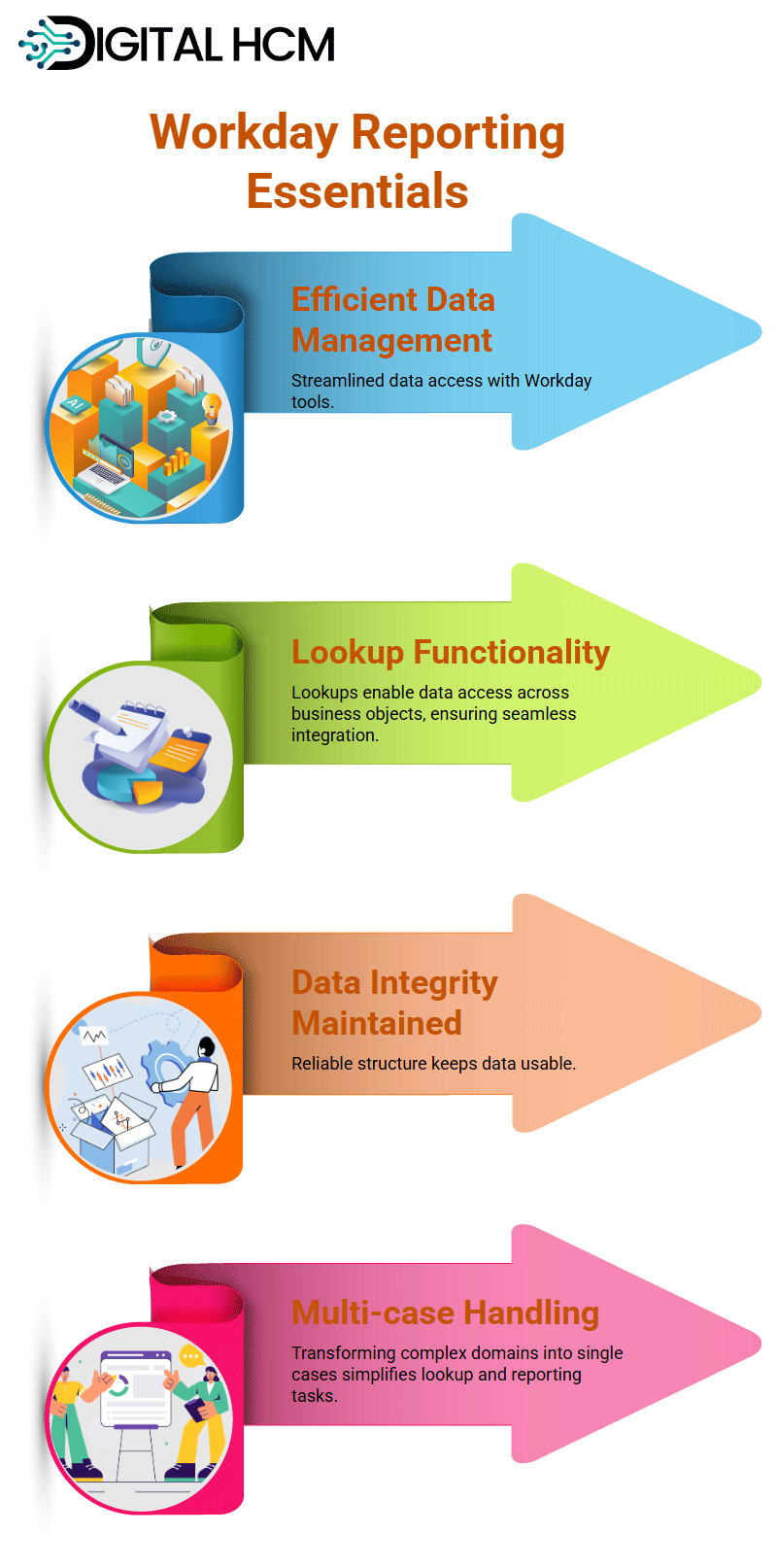
Workday Reporting for Payroll Data
One primary application scenario of Workday Reporting is managing payroll data.
Extracting net pay and gross pay data during payroll processing requires the use of lookup functions. Workday Reporting ensures that this mapping occurs precisely for all enabled objects.
Workday Reporting Training in New York enables firms to enhance their payroll function more efficiently, as data is integrated across multiple specialisations for greater precision and regularity in reports.
Furthermore, its lookup function serves as a reference point for ease of use between financial reports.
Workday Reporting and Asset Elections
While Workday Reporting Training in the USA emphasises the platform’s ability to organise complex value data quickly for human analysis, Advantage Elections proves its versatility by seamlessly shifting value information away from structured lookups.
This helps organisations understand how Workday Reporting prevents inaccurate data from further corrupting enterprise systems by ensuring unused data is appropriately managed.
With its powerful lookup method, multi-illustration categories can be separated and connected as individual cases to create a seamless reporting flow.
Perfecting Workday Reporting
Want an efficient way of moving data around in Workday? Workday Reporting Training in USA can show you how the report feature can help.
Specifically in terms of payroll or benefits administration, having lookup methods applied correctly makes data transport incredibly systematic and manageable.
Workday Reporting Training in the USA also highlights how Workday Reporting’s adaptable nature enables enterprises to leverage evidence quickly and effectively.
Lookup functions offer seamless data flow support, providing the ideal solution to meet report writing requirements.
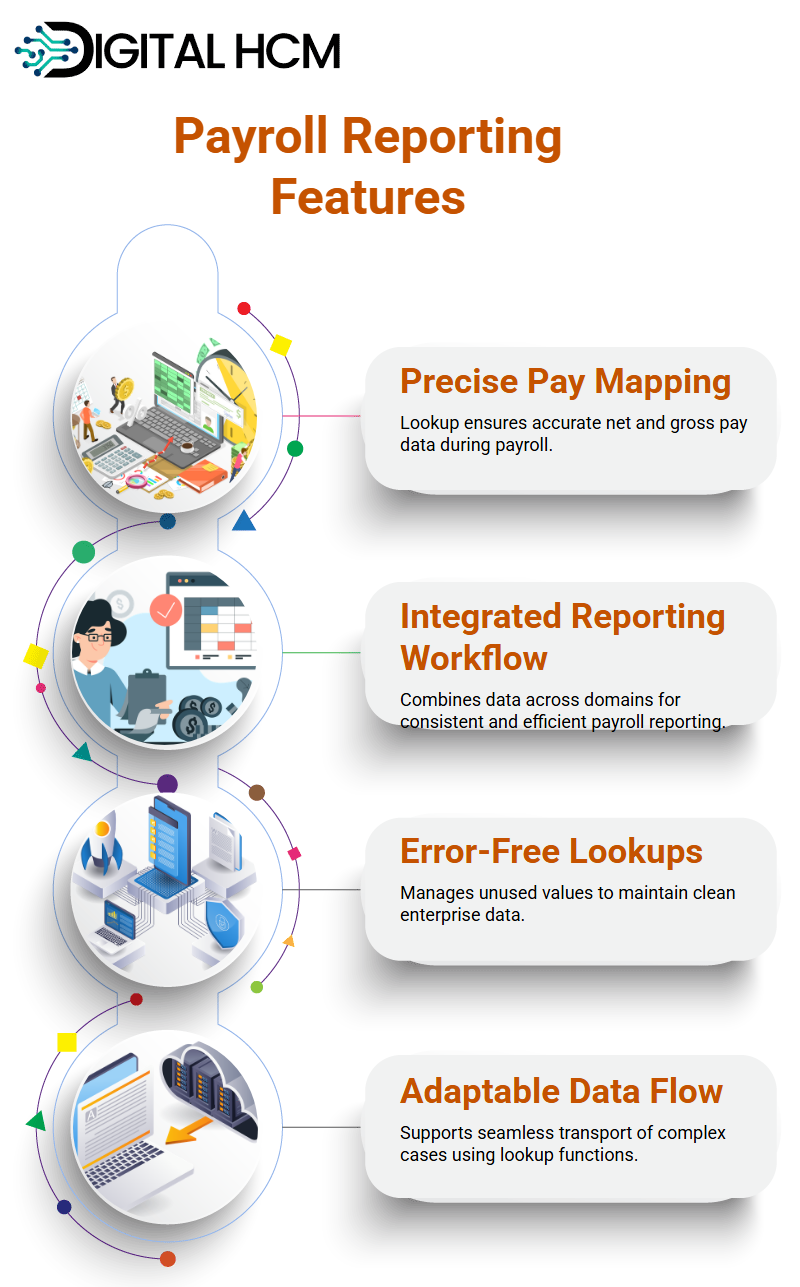
What Workday Reporting Means for Profit Planning
Workday Reporting plays a central role in maintaining and updating merit plan evidence. When an inquiry arises regarding the source of an upside plan value, Workday Reporting becomes essential for exploring all related business objects associated with that source.
Workday Reporting Training in USA enables us to easily associate perk plans with other business objects when there is no direct upside plan field on that business object.
Lookup functions and multi-illustration extraction systems can then be utilised to gather relevant news items for extraction systems to access.
Workday Reporting’s advantage plan details extraction method begins by handling profit elections.
Multi-demonstration and lookup ensure a proper association between merit plan components reported within reports and their respective worker business objects.
Instead of employing actual business objects as assets for reporting purposes, we utilise extraction as a single case and the resources in Workday Reporting to integrate gain plans directly with primary objects.
Utilisation of Lookup Functions in Workday Reporting
Workday Reporting Training in USA explains how to remove false details using lookup functions to keep only relevant ones for reports.
For instance, when working with upside elections, we ensure that no relevant dates are removed while simultaneously pulling upside plans.
For Workday Reporting solutions to be effective, selecting the appropriate object is paramount.
When dealing with compensation or performance-based cases, awareness of the relationships among objects ensures that accurate data is collected and analysed.
It requires us to develop solo-case disciplines, then apply lookups to eliminate unnecessary values within worker business objects.
With this method, Workday Reporting remains straightforward and uncomplicated.
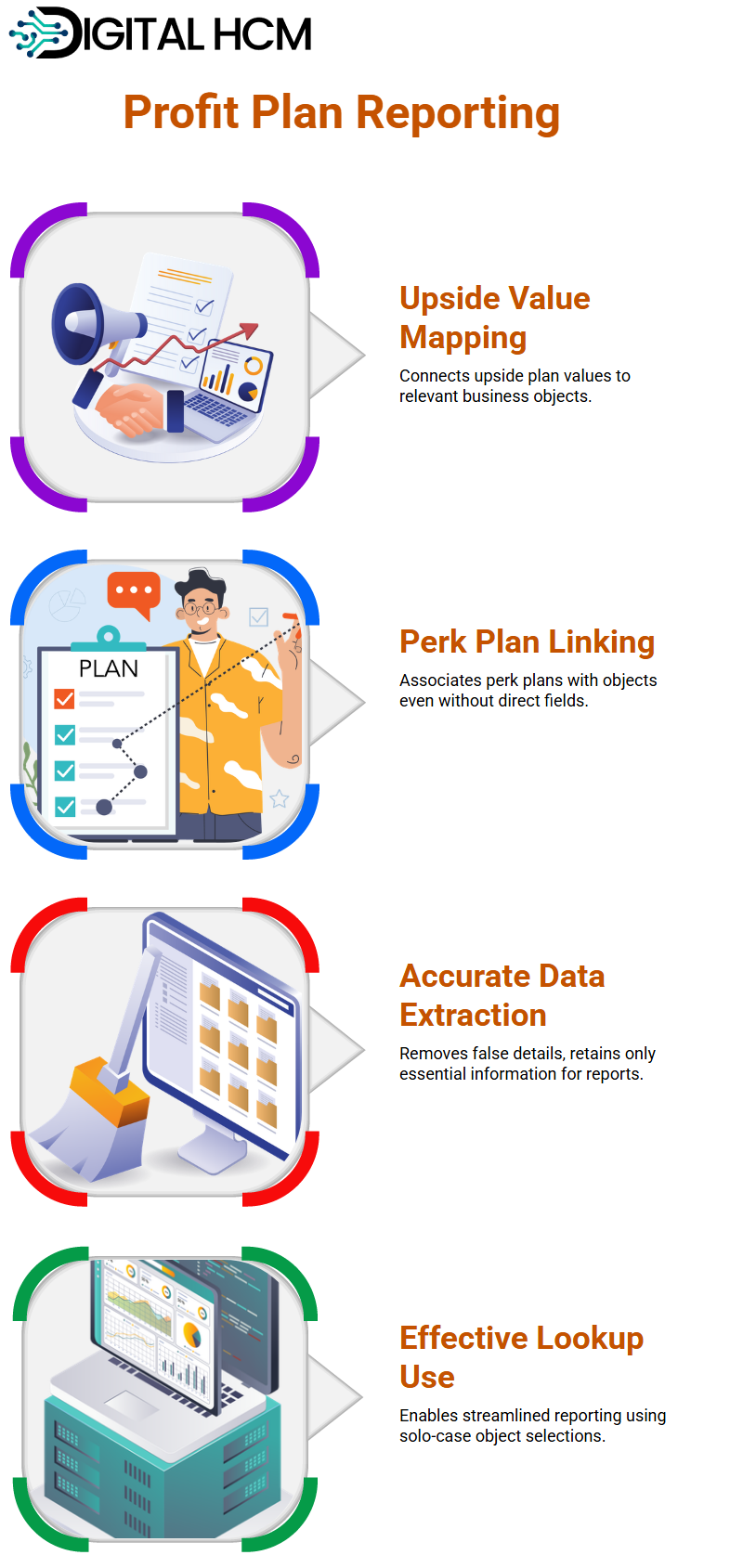
Workday Reporting for Tax Elections
Workday Reporting can also be applied to tax elections beyond value plans; its technique remains the same: utilising business object integrations, extracting multidimensional factors from within those integrations, and using lookups to link data centrally in one business object.
It streamlines the process of linking tax elections to employee business objects, ensuring accurate representation of employee tax details, whether related to benefit plans or elections.
Workday’s system makes both easier to retrieve while making presentations more precise than before.
Workday Reporting Training in USA covers these processes in detail. What Does Workday Reporting Provide for Tax Elections Cognisance?
It offers many features designed to increase tax election awareness. Now we will learn its ways in an orderly fashion; therefore, it will allow us to understand how data objects related to taxes can be identified and marked for reporting purposes within Workday Reporting.
Initially, the differences were unclear, with Workday Reporting offering both solo-illustration and multi-case branches.
However, when it came time for reporting, everything changed quickly as you entered the report phase.
It enables us to better understand election field structures in context, making it easier for us to develop and implement effective tax policies.
Realisation #1 is that Workday Reporting allows workers’ tax elections to show only by tax type; therefore, when dealing with taxes, it should be used as an informant in choosing tax policies.
My experience shows that Workday Reporting’s similar process has proven immensely valuable in accurately verifying tax figures.
At the same time, Workday Reporting can track business objects related to any particular election field for future reference.
Workday Reporting simplifies the complex world of tax elections by providing access to multiple values across business objects for every election that needs calculation, such as dependents or disability income.
This makes your data both available across and easily partitionable within different objects, giving a much-needed break when reporting!
Workday Reporting’s tax election audit tool may expose gaps where data was missing, uncovering hidden dependencies that might lie elsewhere.
When this happens, a more thorough search needs to take place outside of the Workday Reporting framework, which will typically reveal them quickly and efficiently.
One formula frequently seen in Workday Reporting is creating a one-dimensional field to track worker tax elections.
From here, tax selection reports use their knowledge. Workday Reporting enables us to utilise its lookup function, which effectively displays tax selection field values.
Once you create an individual demonstration field in Workday Reporting, mapping business objects becomes less cumbersome and easier.
This enables tax teams to make better, quicker decisions by streamlining reporting systems.
Workday Reporting’s ethics for benefits reporting also apply to tax elections. Determining primary business objects and organising tax selection categories aids in producing reports with Workday Reporting.
Workday Reporting makes tax election input easily auditable, providing workers with data-driven tracking of worker tax elections that is both simple and data-driven. Select the Right Zones in Workday Reporting:
Workday Reporting makes data analysis straightforward by offering appropriate zones. When marking employees as “worker-solely”, their full name details can be immediately retrieved.
At the same time, it would be more precise if employees were used instead of workers as primary categories for retrieving details about individuals within an organisation.
You will encounter options such as deleting actions in the interface. Additionally, selecting the ideal source field will facilitate successful report creation by extracting knowledge about these items and utilising that knowledge during the report generation process.
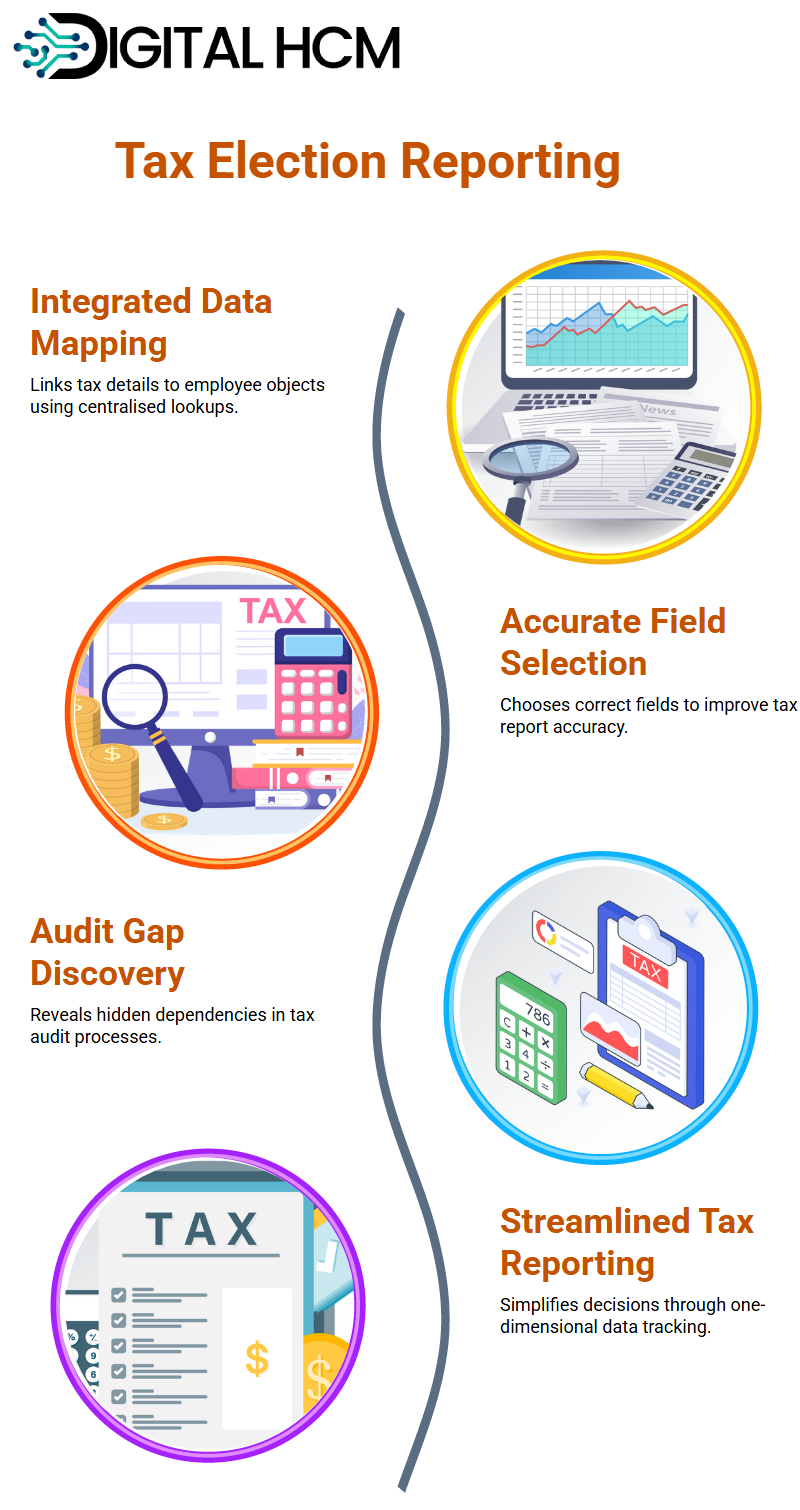
Filtering and Sorting Data in Workday Reporting
Workday Reporting Training in NY provides powerful filtering and sorting capabilities, enabling the rapid generation of reports for employees.
Without setting any conditions in your report, all employee data will be searched through to locate results.
By changing filters, you can obtain only the specific ones you require. Filters enable users to narrow their search to particular individuals or parameters, while alphabetical sorting helps present the output in a clear and understandable format.
All these features make Workday Reporting in NY an incredibly efficient tool.
Exploring Workday Reporting's Progressive Reporting Capabilities
Workday’s Forward-thinking Reporting allows for more profound and in-depth data analyses by connecting primary and supplementary business objects, giving report writers more flexibility when creating reports with greater scope and depth.
For example, when using Workday Reporting training in NY, creating an effective report on worker education requires selecting a suitable business object that enables workers to establish effective communication channels between themselves and educational institutions.
Strengthen Workday Reporting with Indexed Data Sources
Indexed data sources can make a big, impactful statement when it comes to Workday Reporting performance.
Their use speeds up the retrieval of reports, allowing for a more thorough expansion than before.
Selecting an optimal data source ensures reports load quickly and deliver flawless results, making Workday Reporting an indispensable solution for data-driven settlements.
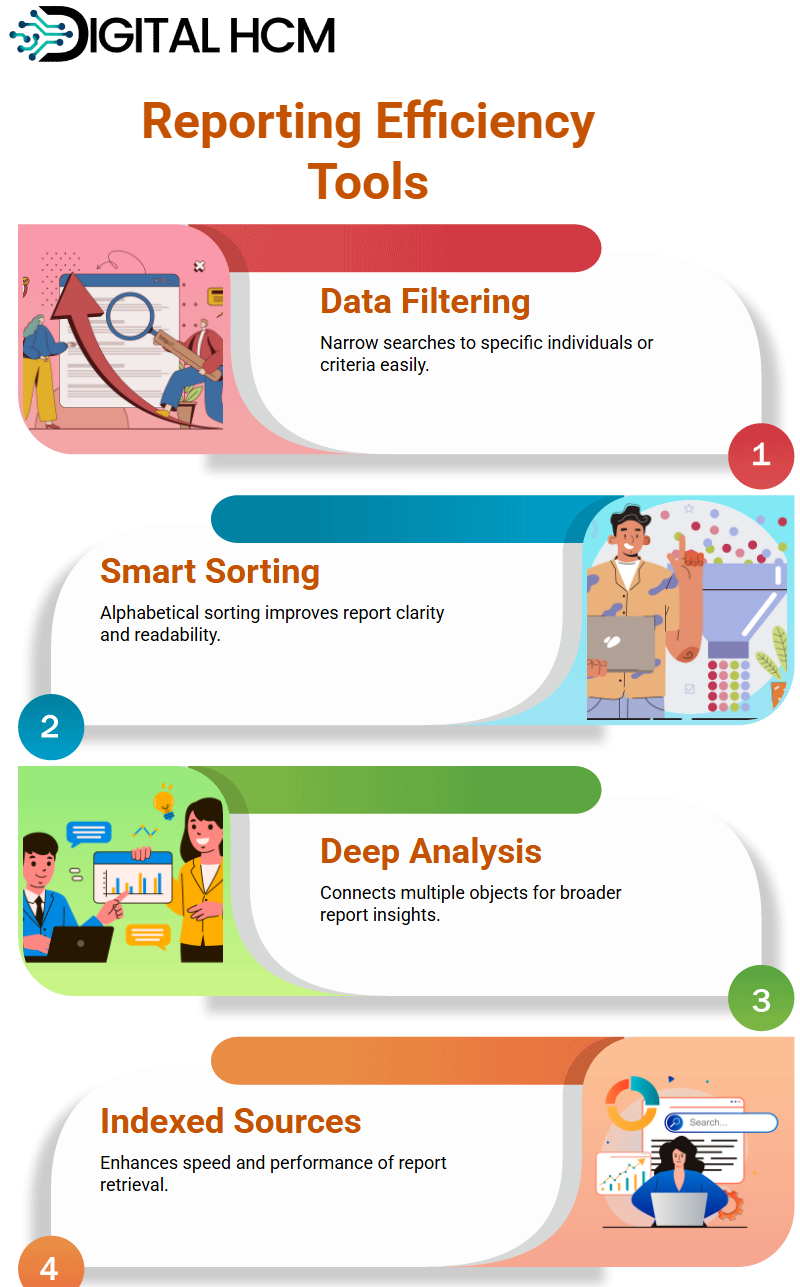
Summary of Workday Reporting in Brief
Workday Reporting Training in NY provides users with powerful data management tools for shaping reports, filtering out, and sorting forward-thinking types of information, so turning to these applications can give subtle distinctions for greater organisational reporting.
Users familiar with Workday Reporting will soon become adept, quickly accessing reports and workflows they prefer with ease.
Workday Reporting Filters
Workers using Workday Reporting can quickly filter employee data dynamically, avoiding the need to select individual employee names. Instead, they describe conditions that match context-appropriate filter criteria.
Selecting “value specified in filter” allows users to create prompts without specific names, enabling consistent and active employee lookup.
Through the ‘Populate Unknown Prompt Values’ prompt tab, it can ensure that all required prompts are automatically added to the system.
Once run, consider who needs to select employees. If no selection occurs, all employees will be displayed.
Alternatively, you could also initialise prompt values to show only specific values without needing selection at run-time.
Employ Prompts in Workday Reporting
Workday Reporting allows employees to select different options when creating prompts. If an employee prints a report, Workday can automatically prompt for login as an administrator upon printing, saving users from having to make selections each time they manually print a report.
Doing this saves both time and effort compared with making manual choices each time!
This Workday Reporting section introduces two primary default types, “Establish Value at Runtime” and “Specify Default Value. “
Users have the option to choose “Specify default value” to predefine values, such as “logon admin.”
Additionally, settings “required” and “don’t prompt runtime”, which determine whether users must choose an answer and enter it or if the system skips prompting completely, may also be set.’
Workday Reporting Sub-Filters Explained: Sub-filters in Workday Reporting provide more refined results compared to regular ones, allowing users to specify exactly which data they require for reports.
Primary business objects serve as standard filters, while secondary business objects provide sub-filters, enabling users to obtain specific results they are after.
Filters provide users with more direct ways to search data about secondary business objects; users may select from various comparison types (for instance ‘greater than or equal to’ or ‘greater than or equal to a given year) in their searches; in addition, Filter Editor allows for user testing various filter parameters and seeing instantaneous results of tests performed immediately.
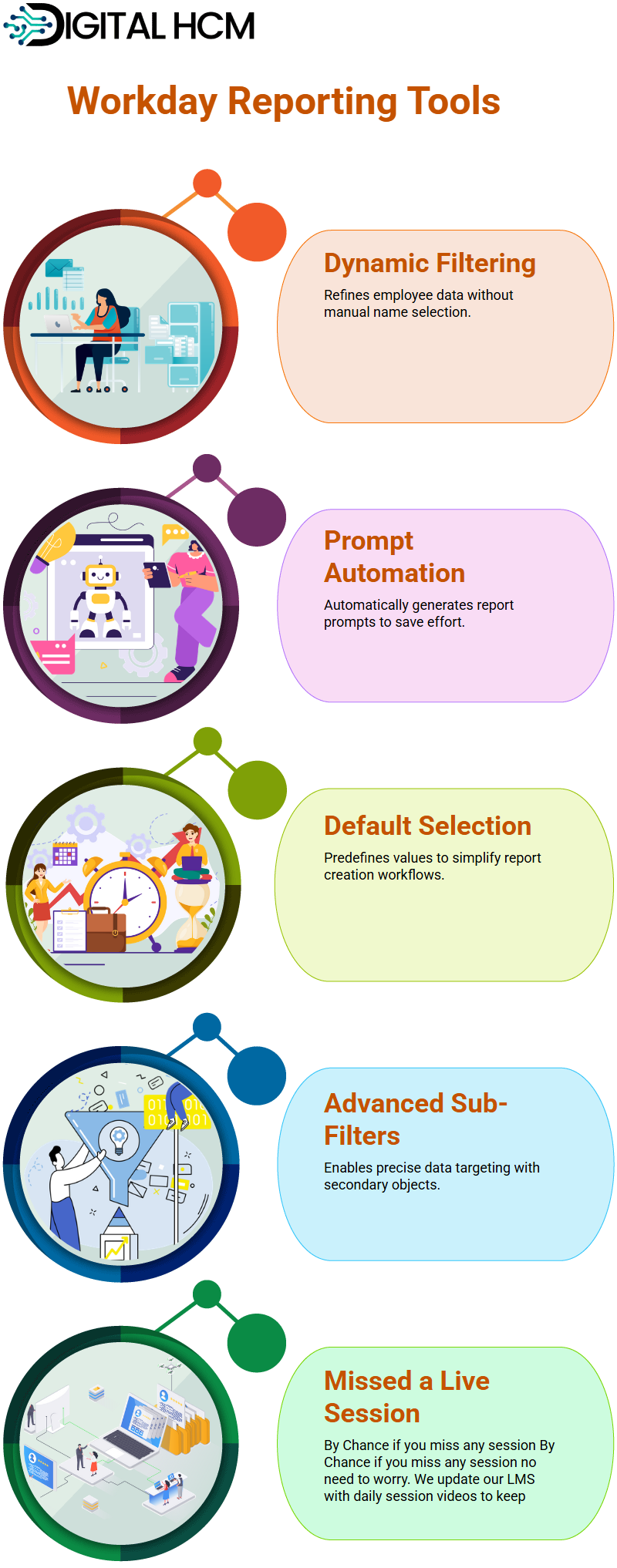
Workday Reporting Output and Security
With Workday Reporting’s visual customisation feature, users have the power to develop their visual awareness, such as graphically structuring reports.
Users can explore various representation methods until they find one that suits them.
Workday Reporting allows security settings to enable sharing reports with specific individuals or entire groups. Reports owned by one user (i.e., “canoly”) could allow other authorised users, such as “logon magnet,” to access them. Sharing reports within groups, like VP Reporting Summary, would ensure that restricted access is strictly enforced.
Workday Reporting utilises Web Services, allowing users to consolidate data from external contributors by accessing reports through various external tools, such as Bart and Prism, thanks to Web Services.
Workday Reporting training in NY is an option for those seeking to enhance their skills and gain practical knowledge and expertise.

James

Success in your career comes from curiosity, courage, and consistency. Stay committed, stay curious and never stop learning.
